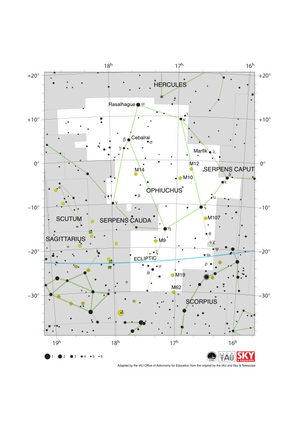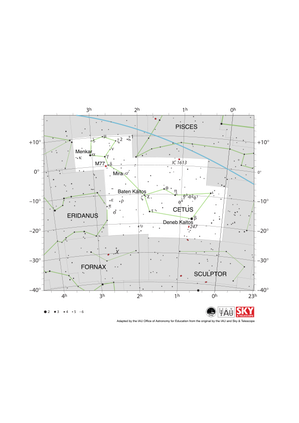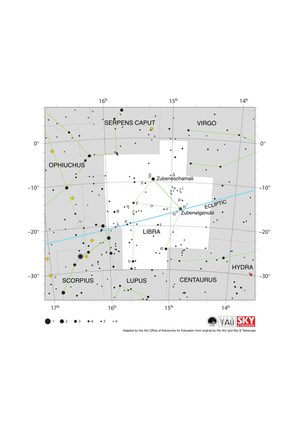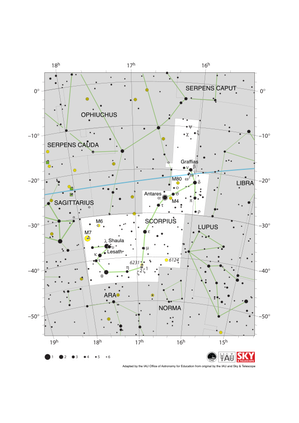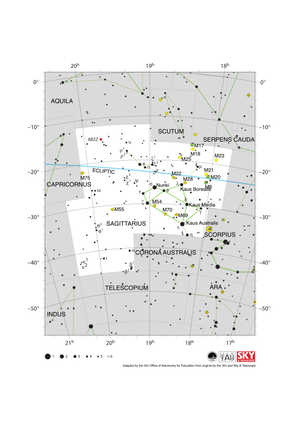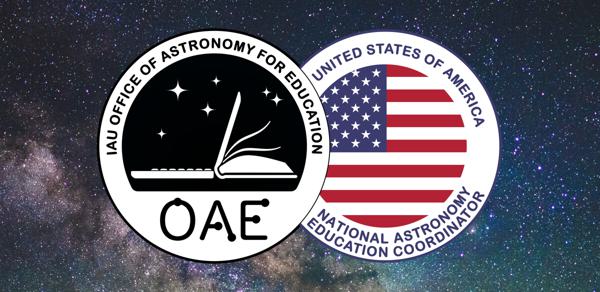Glossarbegriffe: Tierkreis
Description: Der Tierkreis (oder Zodiak) ist ein Streifen des Himmels, der etwa 8 Grad nördlich und südlich der Ekliptiklinie liegt. Die scheinbare Bewegung der Sonne im Laufe eines Jahres und die Bewegung der Planeten verlaufen innerhalb dieser Zone. Im Tierkreis befinden sich 13 Sternbilder: Widder, Stier, Zwillinge, Krebs, Löwe, Jungfrau, Waage, Skorpion, Schütze, Schlangenträger, Steinbock, Wassermann und Fische. Die meisten dieser Sternbilder stellen Tiere dar. Der Name leitet sich aus dem Altgriechischen ab und bedeutet ungefähr "Kreis mit kleinen Tieren".
Zugehörige Glossarbegriffe:
See this term in other languages
Term and definition status: The original definition of this term in English have been approved by a research astronomer and a teacher The translation of this term and its definition is still awaiting approval
The OAE Multilingual Glossary is a project of the IAU Office of Astronomy for Education (OAE) in collaboration with the IAU Office of Astronomy Outreach (OAO). The terms and definitions were chosen, written and reviewed by a collective effort from the OAE, the OAE Centers and Nodes, the OAE National Astronomy Education Coordinators (NAECs) and other volunteers. You can find a full list of credits here. All glossary terms and their definitions are released under a Creative Commons CC BY-4.0 license and should be credited to "IAU OAE".
If you notice a factual or translation error in this glossary term or definition then please get in touch.
Zugehörige Medien
Die Sterne und das Meer gemeinsam bewachen
Bildnachweis: Likai Lin/IAU OAU
License: CC-BY-4.0 Creative Commons Namensnennung 4.0 International (CC BY 4.0) icons
Related Diagrams
Ophiuchus Constellation Map
Bildnachweis: Adapted by the IAU Office of Astronomy for Education from the original by IAU/Sky & Telescope
License: CC-BY-4.0 Creative Commons Namensnennung 4.0 International (CC BY 4.0) icons
Cetus Constellation Map
Bildnachweis: Adapted by the IAU Office of Astronomy for Education from the original by IAU/Sky & Telescope
License: CC-BY-4.0 Creative Commons Namensnennung 4.0 International (CC BY 4.0) icons
Libra Constellation Map
Bildnachweis: Adapted by the IAU Office of Astronomy for Education from the original by IAU/Sky & Telescope
License: CC-BY-4.0 Creative Commons Namensnennung 4.0 International (CC BY 4.0) icons
Scorpius Constellation Map
Bildnachweis: Adapted by the IAU Office of Astronomy for Education from the original by IAU/Sky & Telescope
License: CC-BY-4.0 Creative Commons Namensnennung 4.0 International (CC BY 4.0) icons
Sagittarius Constellation Map
Bildnachweis: Adapted by the IAU Office of Astronomy for Education from the original by IAU/Sky & Telescope
License: CC-BY-4.0 Creative Commons Namensnennung 4.0 International (CC BY 4.0) icons

